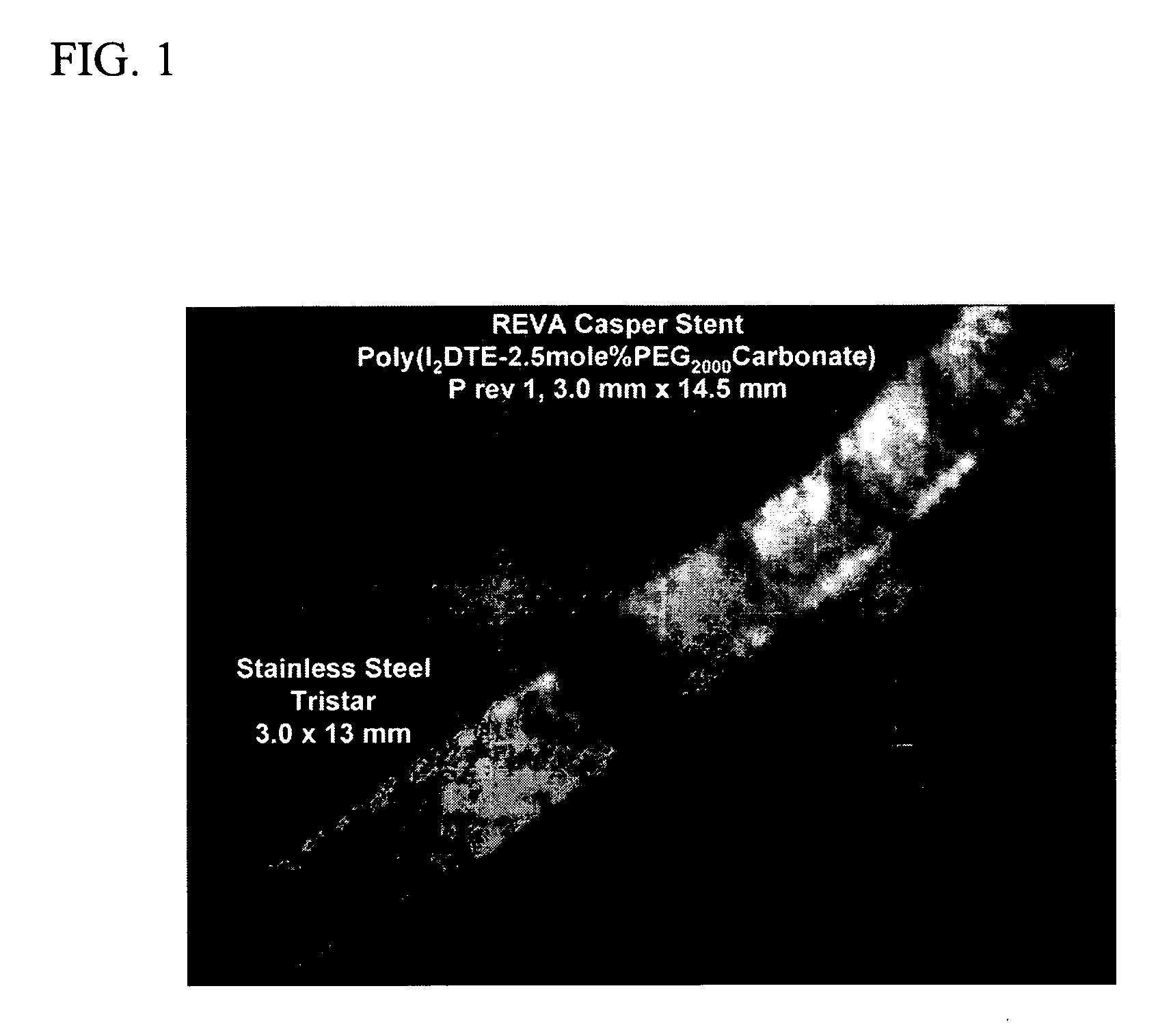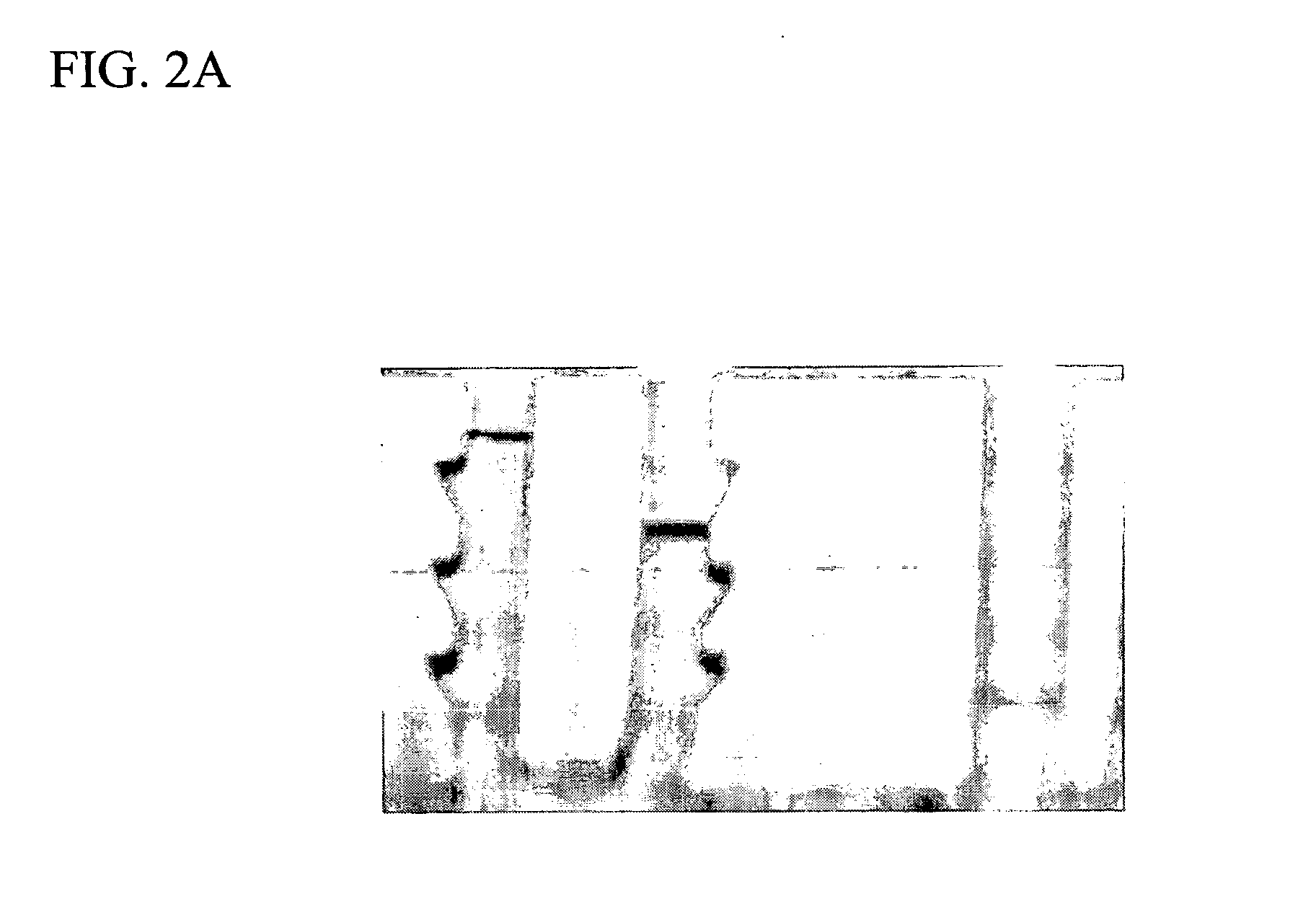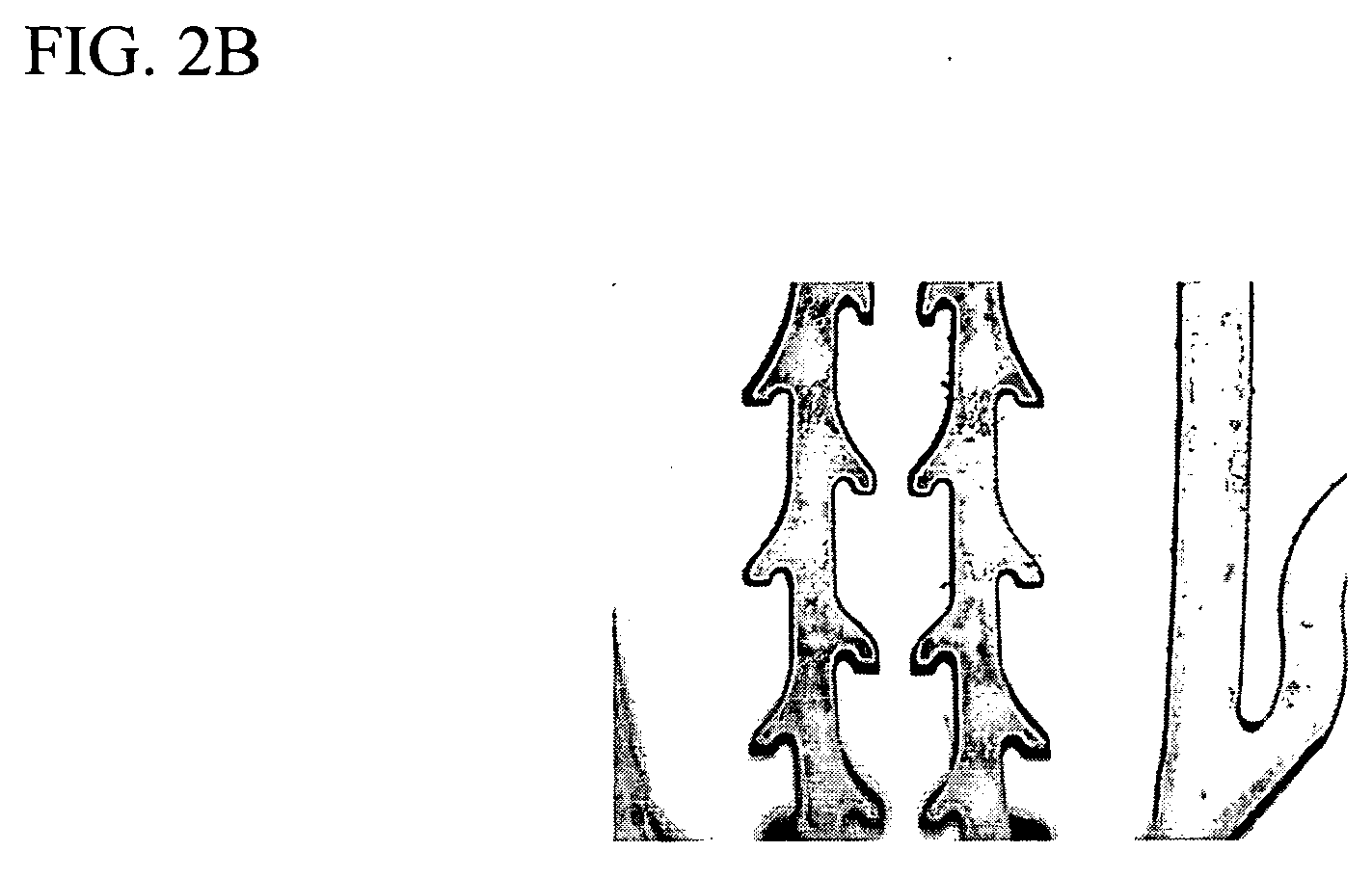Radiopaque polymeric stents
a polymer stent and radiopaque technology, applied in the field of polymer medical devices, can solve the problems of intimal hyperplasia, further occlusion, and growth of smooth muscle cells
- Summary
- Abstract
- Description
- Claims
- Application Information
AI Technical Summary
Benefits of technology
Problems solved by technology
Method used
Image
Examples
example 1
Preparation of 3,5-diiodo-4-hydroxyphenyl propionic acid (3,5-di-iodo-desaminotyrosine, I2DAT)
[0294] Dissolve 50 g (0.300 mol) of DAT in 500 mL of 95% ethanol. To the solution with stirring was added 146 g (0.605 mol) of PyICl. The solution was stirred for 30 min when the solid slowly dissolved to give a light yellow solution. This was added over 30 min to 2.5 liters of water containing 10 g sodium thiosulfate. The water was stirred during this addition. An off-white solid separated and was isolated by filtration and washed with several portions of deionized water.
[0295] The solid was transferred to a large beaker along with 2 L of deionized water and 24 g of sodium hydroxide and stirred to dissolve. The filtrate was acidified with 35 mL acetic acid (pH about 4). The white solid formed was isolated by filtration and washed with several portions of water. A rubber dam was used to squeeze out all the water. The solid was dried under nitrogen and then under vacuum. The dry solid was ...
examples 2 and 3
Preparation of Diiodinated-DTE (I2DTE)
[0296] Diiodinated monomer (I2DTE) was prepared using procedures similar to those published in the literature by substituting I2DAT in the place of DAT. In a typical procedure 53.3 g (0.255 mol) of tyrosine ethyl ester, 104 g (0.250 mol) of I2DAT and 3 g (0.025 mol) 1-hydroxybenzotriazole were stirred with 500 mL of tetrahydrofuran in a 1 liter round-bottomed flask. The flask was cooled in ice-water bath to 10-18° C. and 50 g (0.255 mol) of EDCI was added and stirred for 1 h at 15-22° C. This was followed by stirring at ambient temperature for 5 h. The reaction mixture was concentrated to 250 mL and then stirred with 1 L of water and 1 L of ethyl acetate. The lower aqueous layer was separated and discarded using a separatory funnel. The organic layer was sequentially washed with 500 mL each of 0.4 M HCl, 5% sodium bicarbonate solution and 20% sodium chloride solution. After drying over anhydrous sodium sulfate, the organic layer was concentrate...
examples 4 and 5
Preparation of Iodinated Tyrosine Esters
[0297] 3-Iodotyrosine ethyl ester (ITE), and 3,5-diiodotyrosine ethyl ester (I2TE) were prepared from the corresponding iodinated tyrosine by esterification with ethanol and thionyl chloride. The iodinated tyrosines were prepared by the method of Example 1.
PUM
| Property | Measurement | Unit |
|---|---|---|
| Weight | aaaaa | aaaaa |
| Diameter | aaaaa | aaaaa |
| Weight ratio | aaaaa | aaaaa |
Abstract
Description
Claims
Application Information
 Login to View More
Login to View More - R&D
- Intellectual Property
- Life Sciences
- Materials
- Tech Scout
- Unparalleled Data Quality
- Higher Quality Content
- 60% Fewer Hallucinations
Browse by: Latest US Patents, China's latest patents, Technical Efficacy Thesaurus, Application Domain, Technology Topic, Popular Technical Reports.
© 2025 PatSnap. All rights reserved.Legal|Privacy policy|Modern Slavery Act Transparency Statement|Sitemap|About US| Contact US: help@patsnap.com



